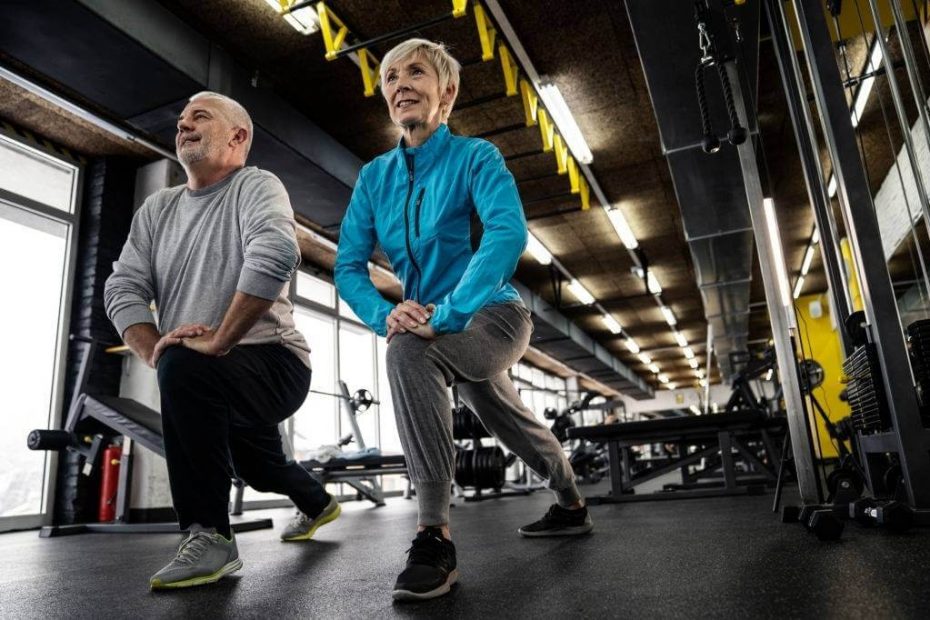In every sport there seem to be many unwritten books full of unofficial wisdom and semi-knowledge that are generously passed on to beginners.

However, the fitness and strength sports division is particularly hard hit, displaying not only many useless myths, but sometimes even dangerous ones.
In gyms, counseling is distributed almost like free wellness drinks. Gullible beginners in particular face not only disappointment with a lack of training results, but also health risks.
Therefore, we would like to take the time to teach you the ten most consistent myths in the area of fitness.
Let’s put aside the latest fashion magazine apple diet and bodybuilding magazine celebrity workout program and seriously reflect on some myths and tips, especially for teens.
Train More Than 3 Times A Week to Build Muscle
Any experienced weight training athlete who has given a little thought to the functioning of the human body will confirm that one of the most common reasons for stagnation in muscle development is lack of rest and so-called “overtraining.”
Muscle cells are destroyed during training and can only regenerate in rest phases. If the breaks between training sessions are too short, the body has no chance of building muscle.
High Reps Lead to Optimal Muscle Definition
This myth is one of the most common. The fact is: if you do an exercise with 6 to 12 repetitions and 3 to 5 sets and choose a weight so high that the muscle is completely exhausted at the end of this exercise, you will stimulate muscle development in a special way.
The less body fat you have, the more visible these muscles are. If you want to achieve a better definition of the muscles, you should pay special attention to the percentage of body fat, that is, lose weight.
This in turn is mainly achieved with several steps like, a specific exercise routine for adolescents, endurance sports and proper nutrition (reduction of short chain carbohydrates and saturated fatty acids).
Choice and Execution of Exercises Influence the Shape of The Muscles
This point takes up the previous myth. Each athlete’s muscle shape is determined by their own genetics.
The best example of this is the head of the biceps. If the muscle belly (bulge or abdomen of a skeletal muscle) is quite flat and large, it will never be possible to train a high “bicep peak” (i.e., a large muscular abdomen size).
Similarly, a highly trained athlete of 1.90 m tall and 90 kg will always have a different muscular structure than a smaller and lighter person.
Muscles can be trained to the genetic limit during weight training, but their shape cannot be changed with training.
The only way to influence muscle form is by stretching, but only to the extent that a shortening of the muscle is counteracted. However, by choosing exercise, you can determine which part of a muscle exercises the most intensity. For example, the “Dips” exercise trains the lower part of the pectoral muscle more, while the incline bench works especially on the upper part.
Over time, the parts of a muscle that you demand the most when choosing exercises will logically grow. In this sense, the appearance of a muscle can be influenced through training.
Long Cardio Sessions: Greater Fat Loss / Long Workouts: Greater Muscle Development
Over and over again you see people struggling and sweating on the cardio machine for 90 minutes or more, and yet the visible successes still leave something to be desired, even after months.
The problem with long cardio sessions is the ineffectiveness for fat loss. Long units with moderate intensity or short units with high intensity are possible, but cannot be combined.
The short unit’s high intensity burn more calories, preserve the muscles and provide effect afterburner longer.
Long sessions, on the other hand, improve long-term endurance, particularly as the body trains how to use energy stores more efficiently.
In power sports, drives that last longer than an hour make little sense. Overload causes fatigue and exercises of low intensity and concentration.
This reduces the effect of training and increases the risk of incorrect posture and injury. Overtraining also causes muscle building to slow down again because the body has to use muscle tissue to gain energy.
During Breaks or After Training, Muscles Change to Fat
Those who build muscle gain weight as soon as they stop exercising because the body converts muscle mass to fat.
This great superstition seems inexplicably persistent. It is best transmitted by those who do not feel like training hard or are jealous of the success of others’ training.
This does not make this myth any more compelling. It’s no secret that muscle and fat are two completely different tissues whose molecular structure is very different. Therefore, it is impossible to convert fat to muscle or muscle to fat.
Unfortunately, we are not allowed to enchant water in oil. A corresponding impression may arise as follows: If weight training is abandoned and eating habits are not adapted to lower calorie needs, the poorer energy balance means that fat is put on more relatively quickly. And due to lack of training, muscles are also lost.
The Abs Ensure Direct Loss of Fat in The Stomach
Another myth that takes hold in teenagers is that countless repetitions of crunches specifically tighten your stomach and finally lure the famous six pack out of its hiding place – that seems to be an unwritten law.
But the abdominal muscles are a muscle group like any other, they also react better to repetitions in the range of 6 to 12.
Additional weight exercises for abs and abdominal machines also provide additional stress and a more effective workout.
Whether the abdominal muscles can finally be seen is once again a matter of body fat percentage. Of course, this can be reduced by training, but not directly on the stomach.
Each body manages its fat stores individually and in all areas of the body. A specific breakdown to a single point is not possible through selective training.
Diets Should Only Consist of Protein and Carbohydrates and Should Not Contain Fat
Excess body fat is the natural enemy of the athlete. However, completely eliminating fat is not only counterproductive but also dangerous.
All three macronutrients (protein, carbohydrates, and fat) are important for the body. The body needs a sufficient supply of these nutrients to be ready for tough strength training.
Unsaturated fatty acids (omega-3 and omega-6) are particularly important for athletes. Omega-3 is produced mainly in marine fish, Omega-6 in high-quality vegetable oils.
Who thinks these fats generally come from their muscle-building diet plan? Having to eliminate them is a serious problem.
In particular, the body’s hormone production, energy balance, and the fight against infection and inflammation are disrupted.
Women Have to Train Differently Than Men
The only relevant difference between men and women is hormonal levels. While men have higher levels of testosterone, women have higher levels of estrogens.
As a result, strength training often helps men build muscle faster, and fat is used in different forms and amounts in both genders. However, this has no influence on the training itself.
Genetic requirements between individual athletes also vary so much that general gender-based training recommendations can be dismissed with a clear conscience as a sham.
In particular, very few women have to fear that they will immediately look like a professional bodybuilder if they train with a relatively high intensity of 6-12 reps.
Building Muscle Impairs Flexibility
Many people resist weight training because they fear it will make them stiff and awkward. However, when we look at fighters, sprinters or boxers, they are muscular, but agile.
The boxer Muhammed Ali weighed around 100 kg. Yet it literally flew “like a butterfly” through the ring.
All professional athletes in basketball, gymnastics, soccer, or swimming practice weight training and, on the contrary, are not clumsy or rigid.
To maintain flexibility despite strength training, it is extremely important to train the opponent of a muscle (e.g., the triceps is the opponent of the biceps), so that no muscle imbalances arise. Stretching exercises can also be helpful in maintaining or increasing mobility.
I’m Too Old to Start Weight Training
It is true that the production of hormones slows down over the years and the metabolism slows down.
This not only reduces fat burning, but muscle building also takes longer. This is the obvious reason why exercise should also be done at an advanced age.
With moderate and sustainable training, the joints and bones are protected, the heart, lungs and muscles are strengthened and the physical breakdown process is delayed.
As you get older, the most important workout becomes not only visible anti-aging, but also for the prevention of immobility, immunodeficiency, weight, cholesterol, and heart problems, as well as osteoporosis.
The key to successful and motivating training is to adapt the training objectives to your own age group.
We hope that with this article we can make a small contribution to the myths and fairy tales in weight training, especially in beginners who begin to train.
Basically, the following always applies: If you don’t want to waste time training on wrong theories, you should always question well-intentioned advice with common sense. What cannot be explained conclusively rarely has substance.












